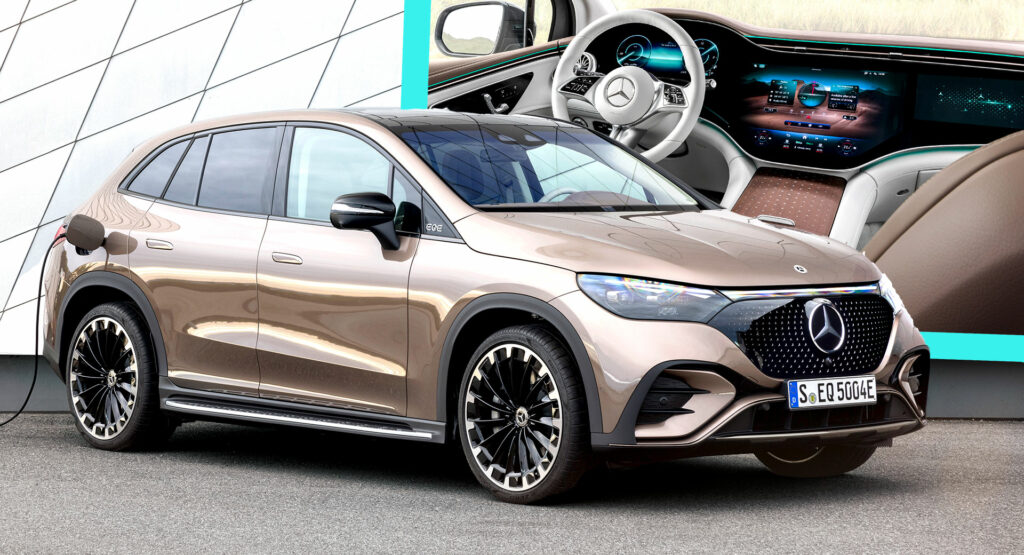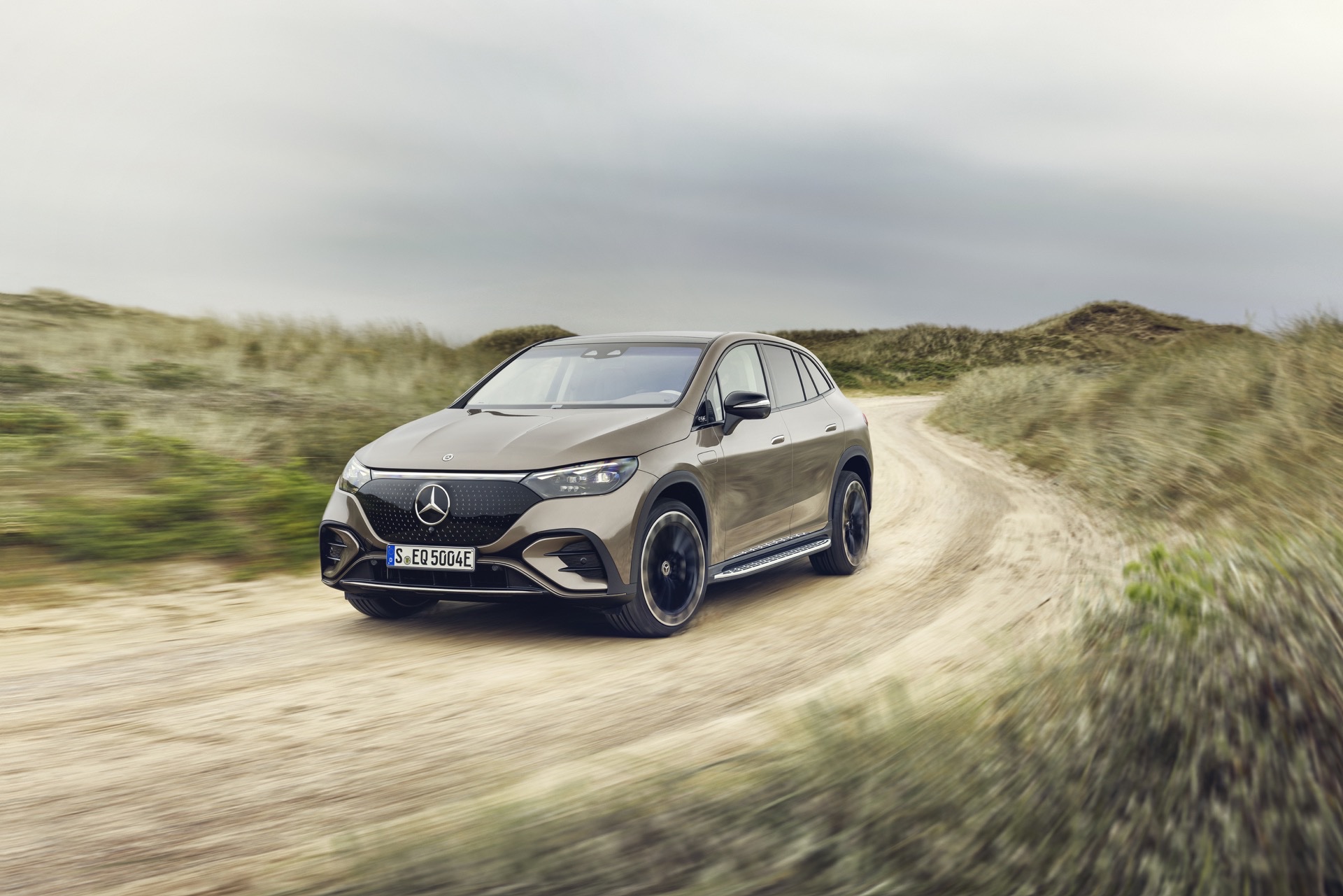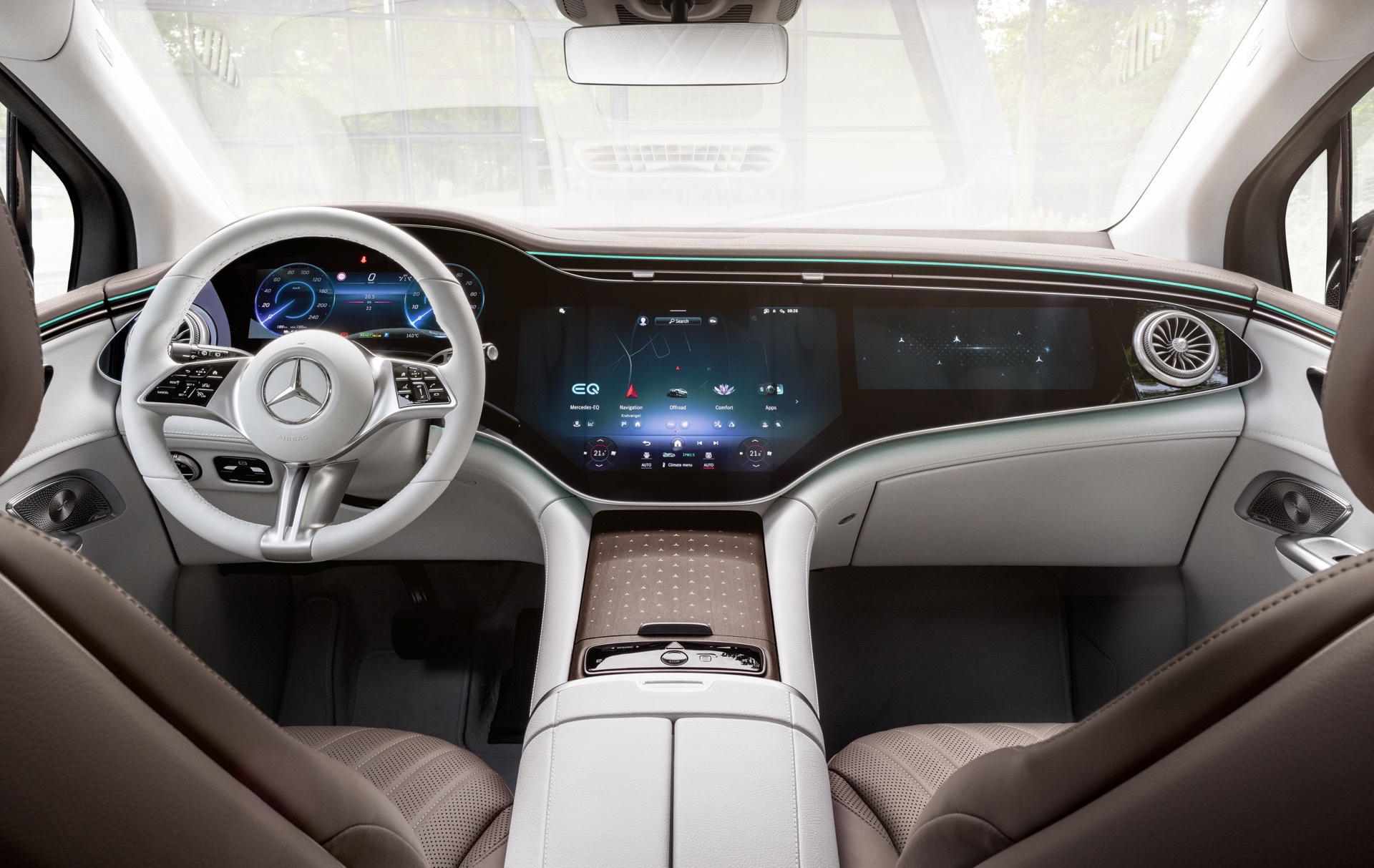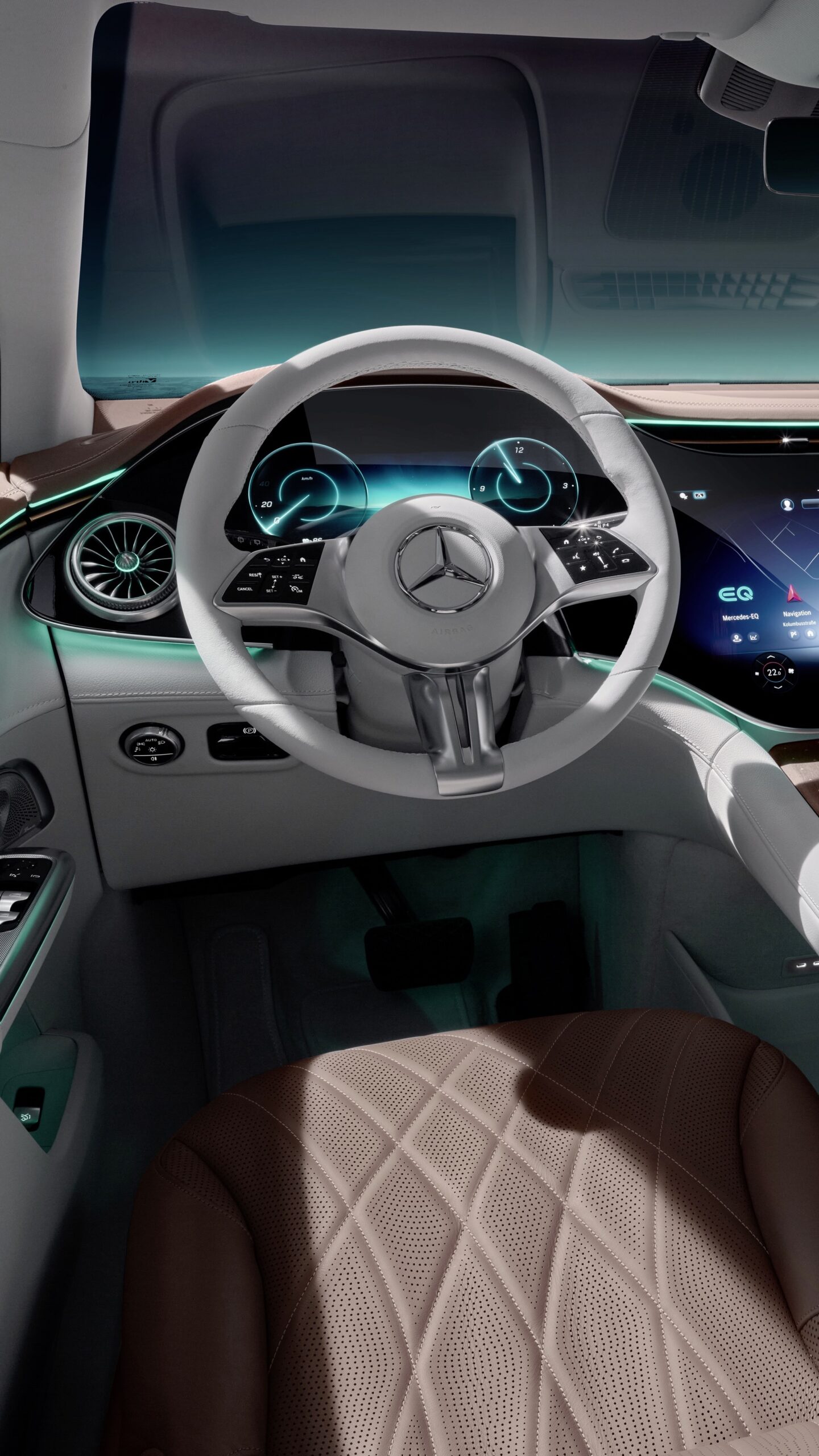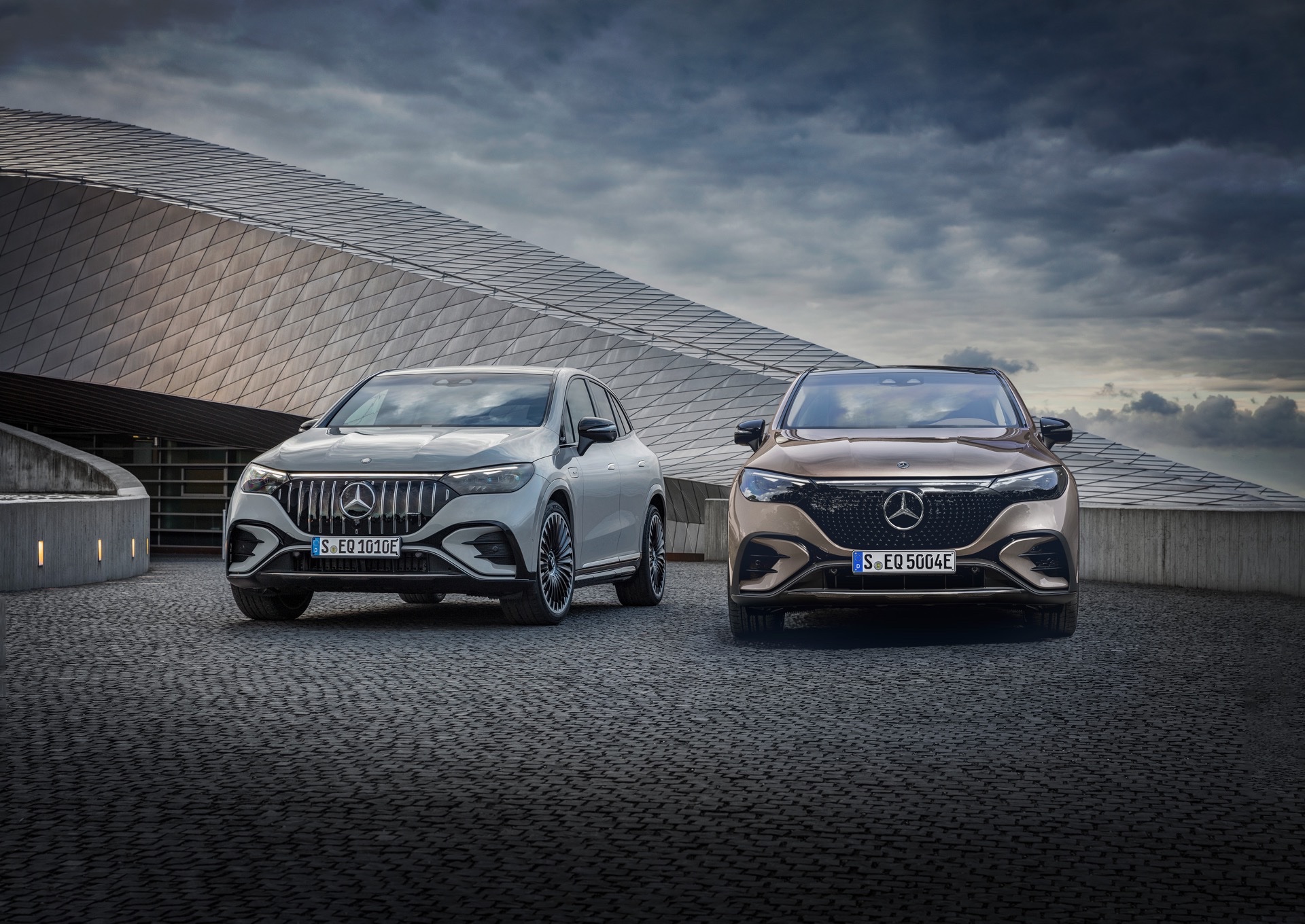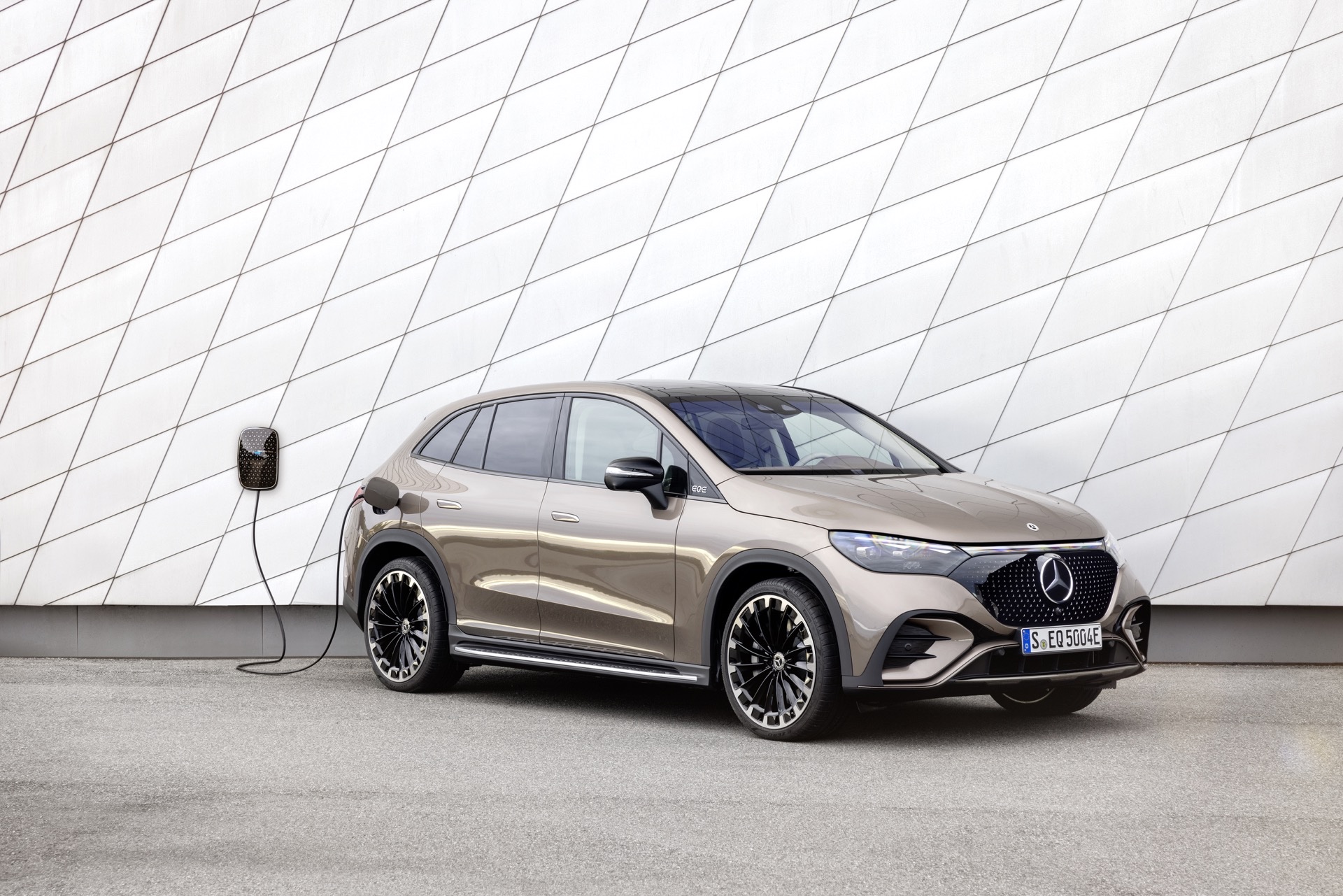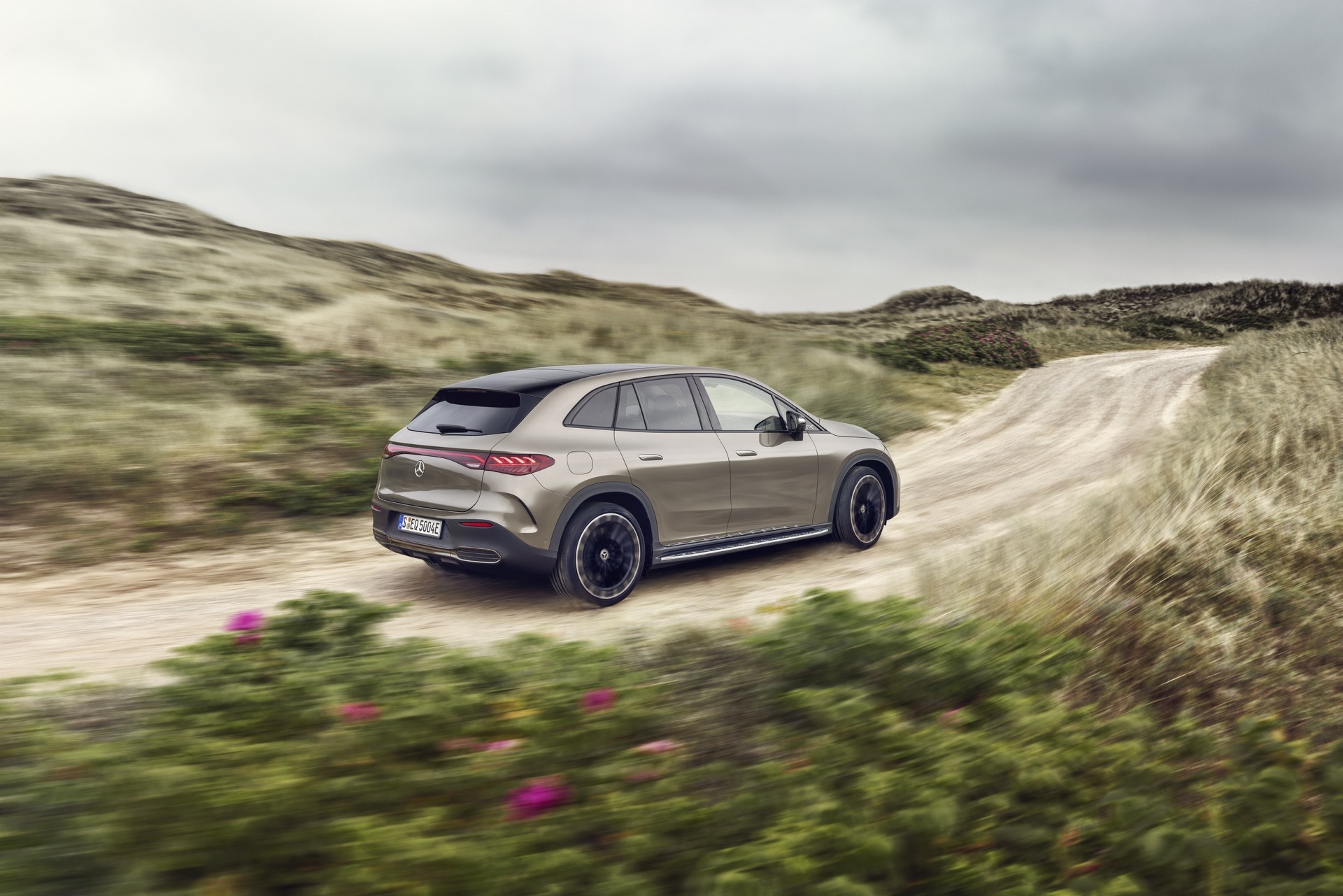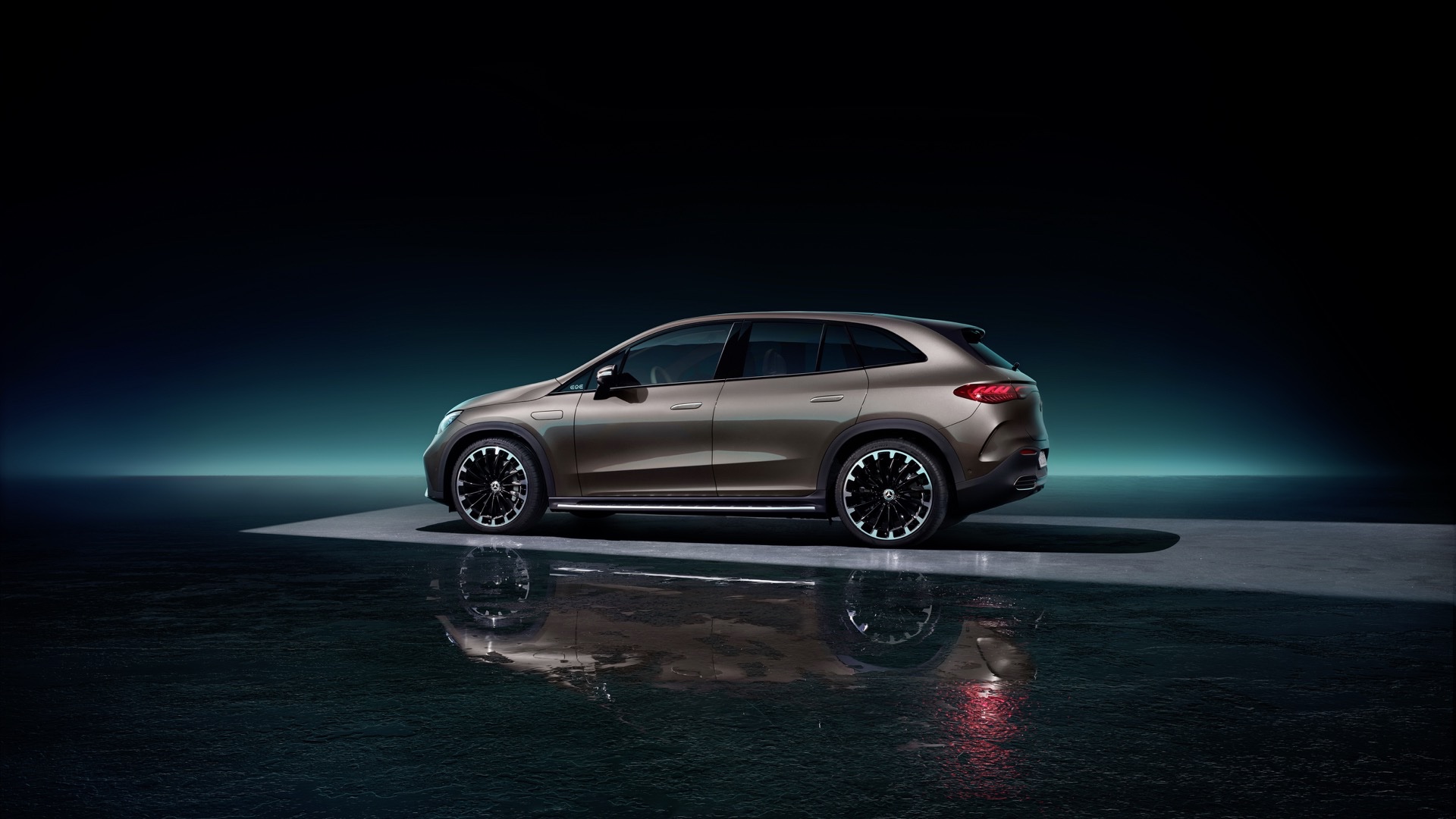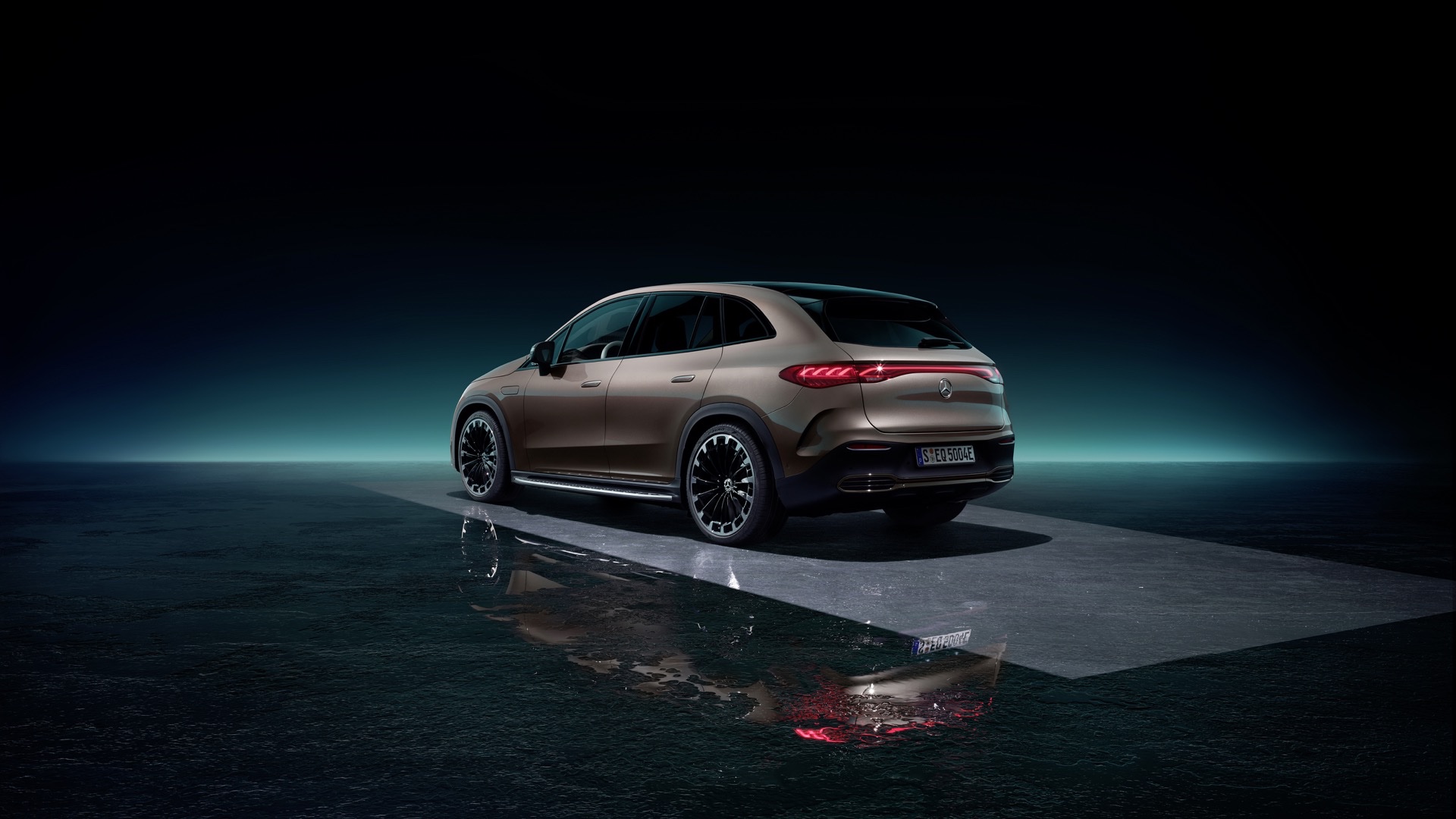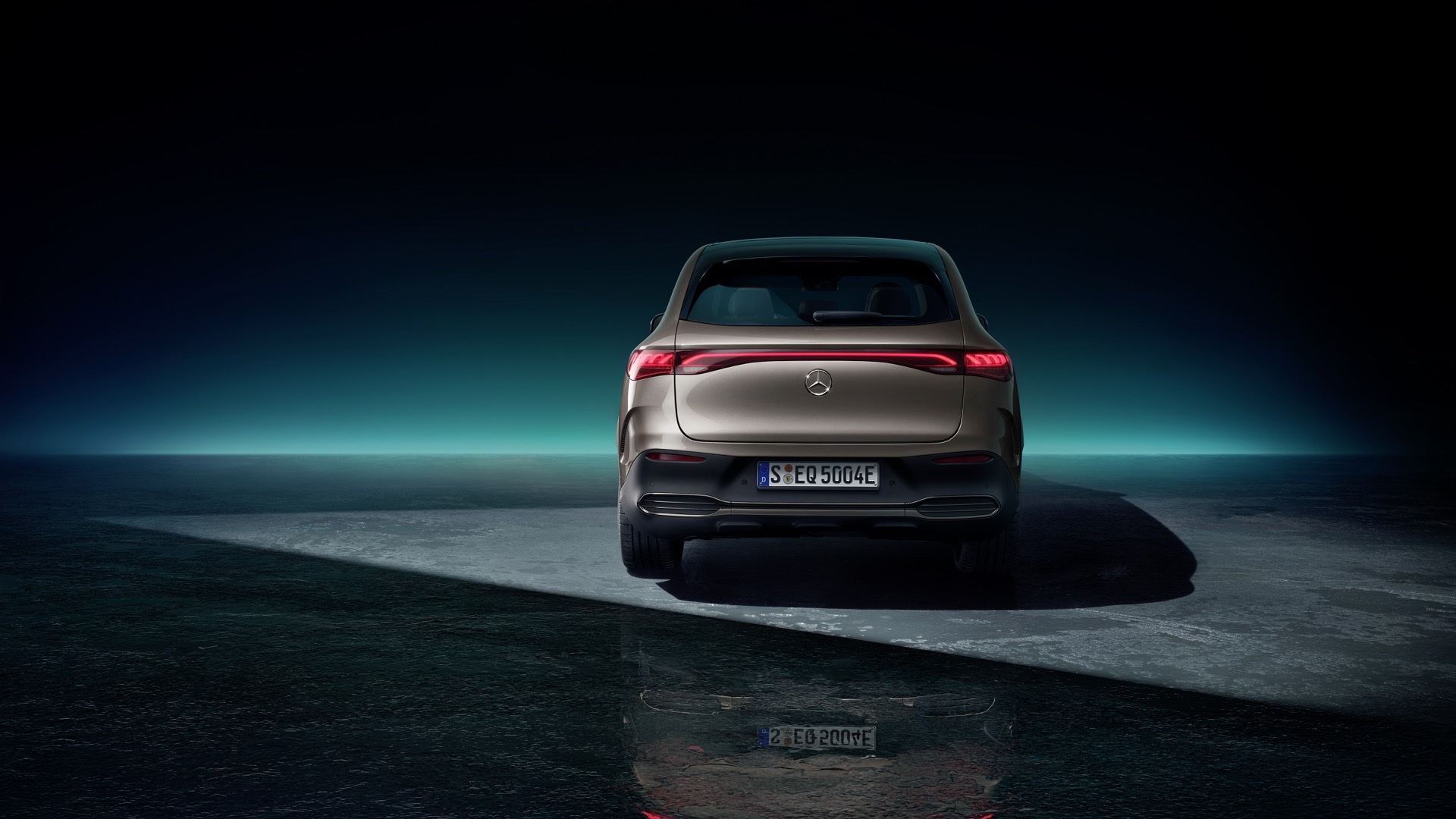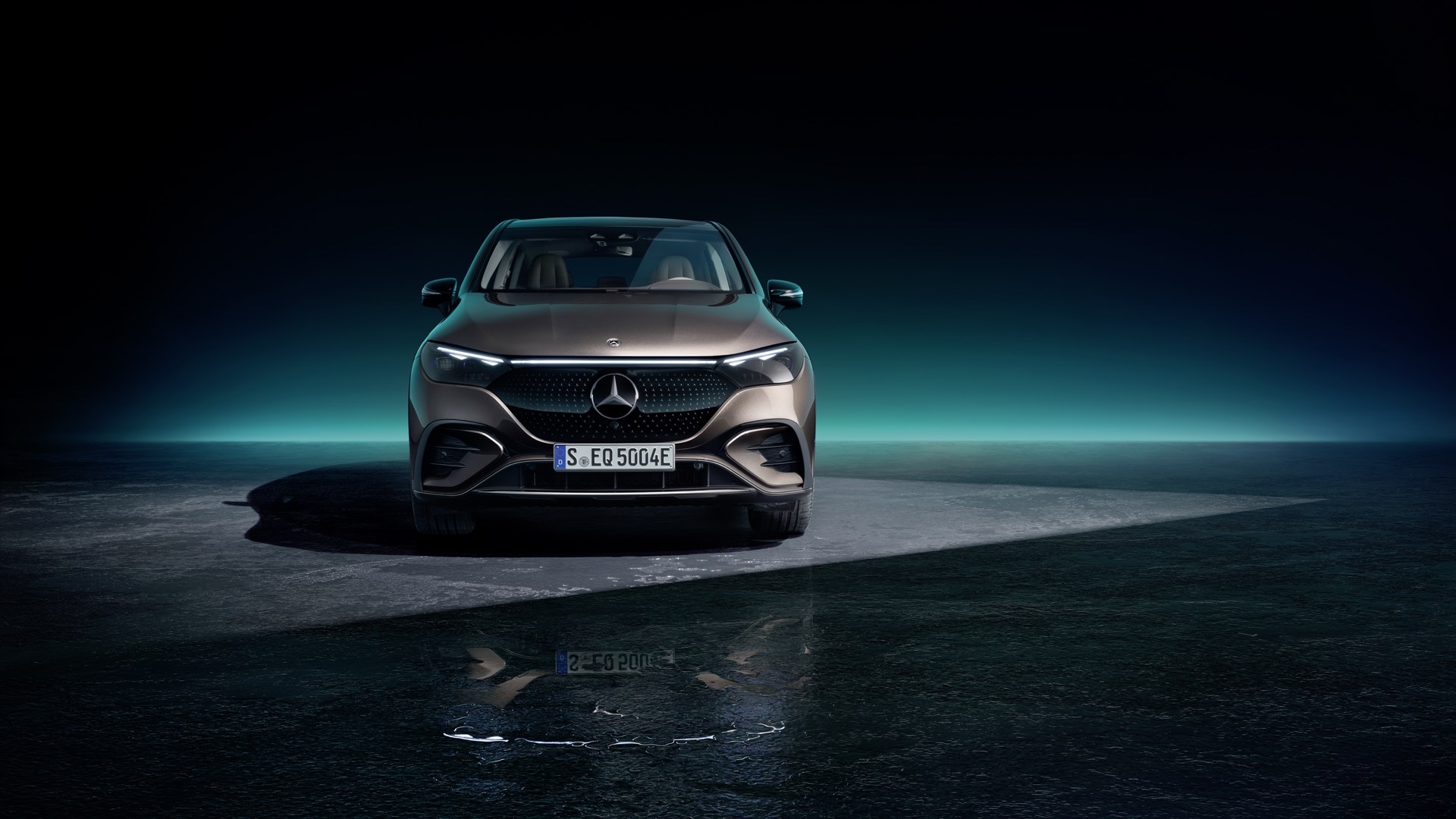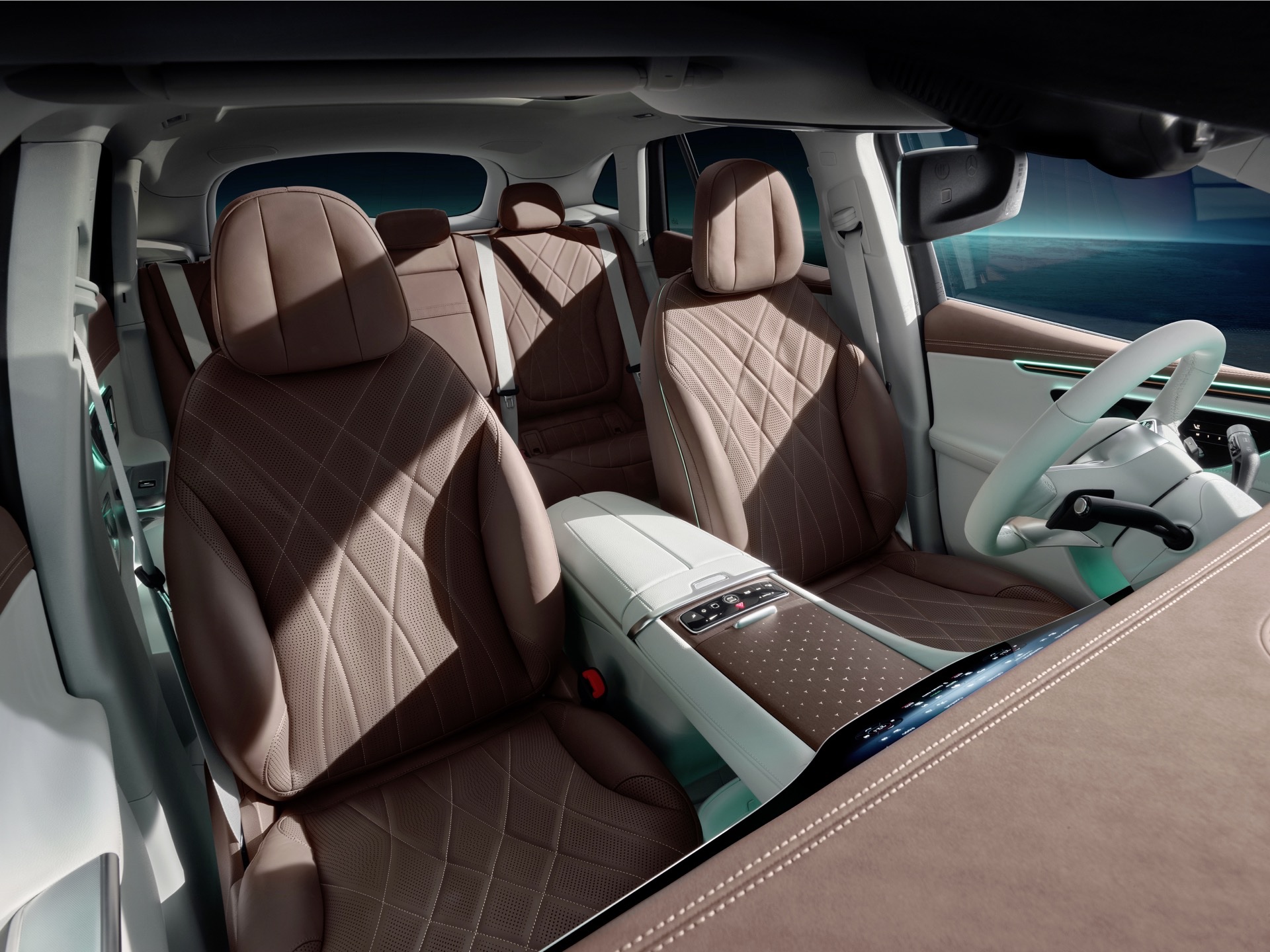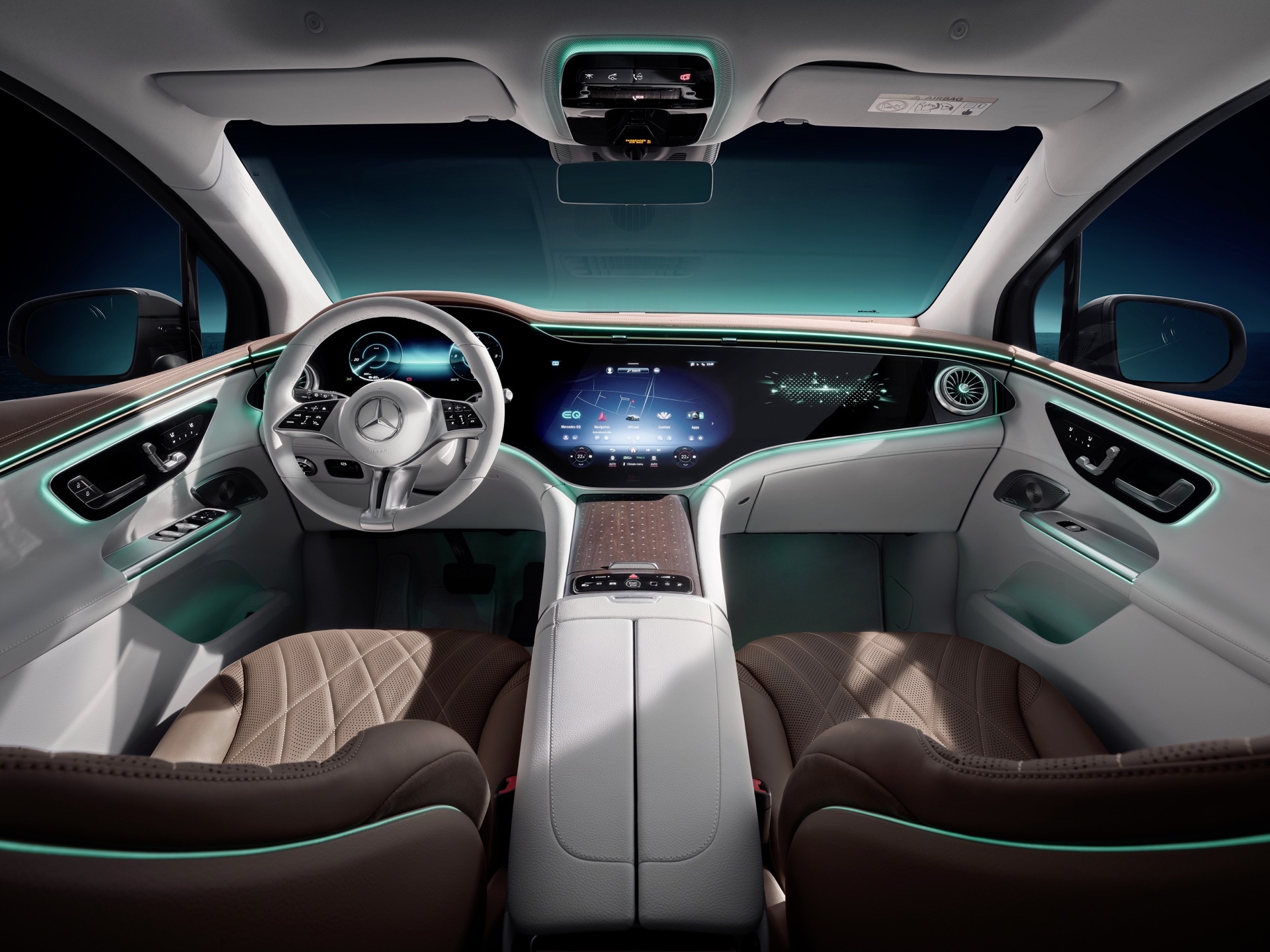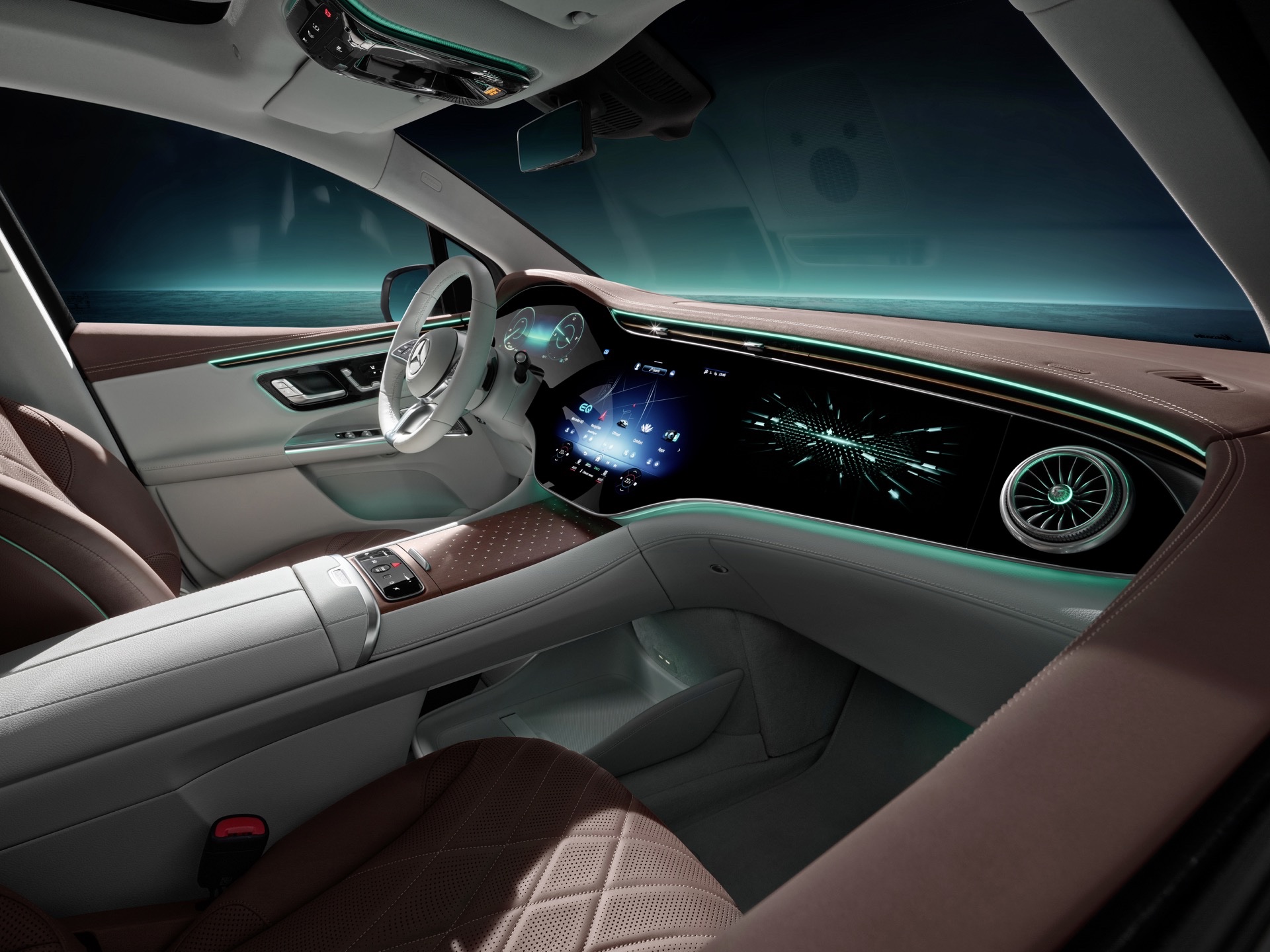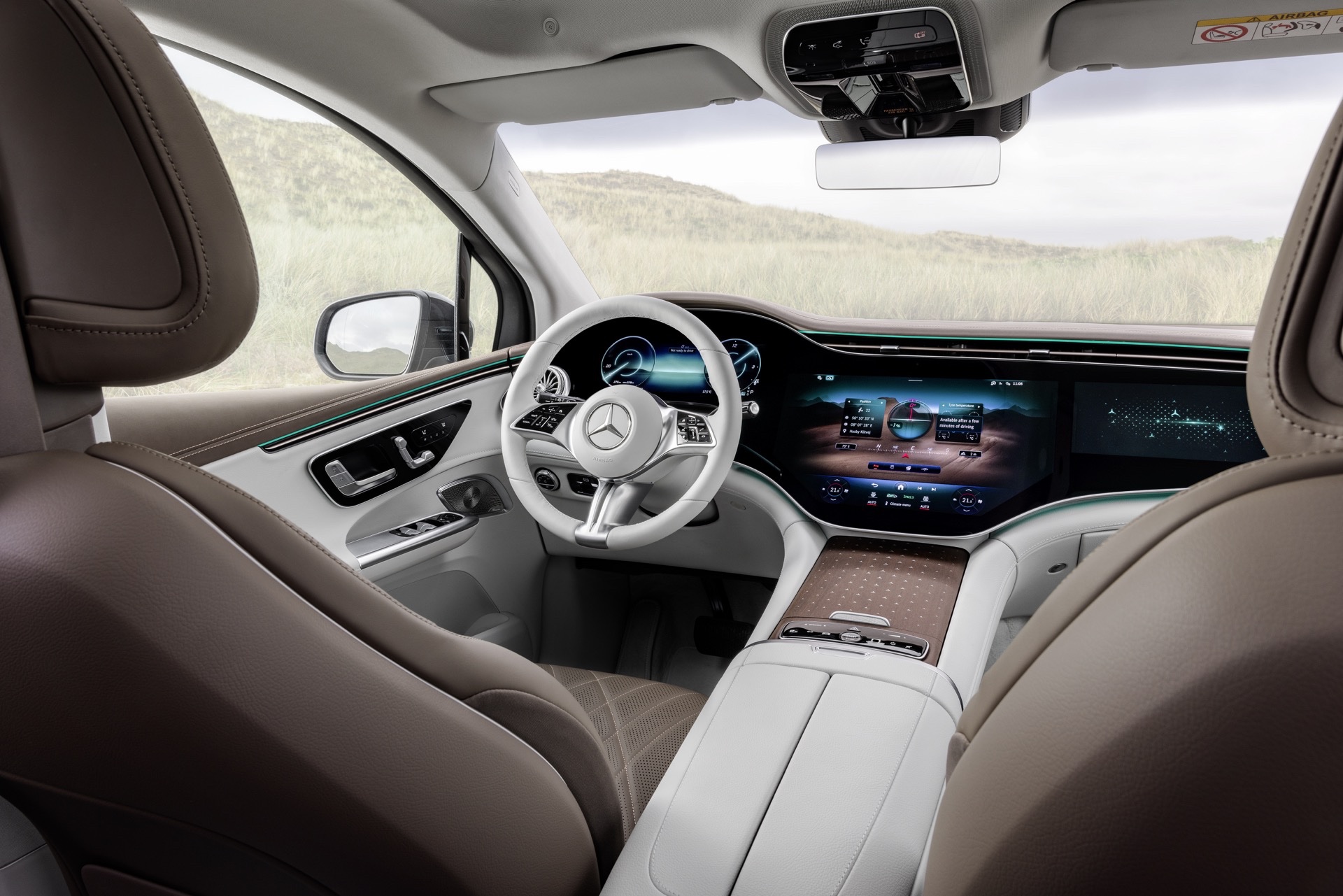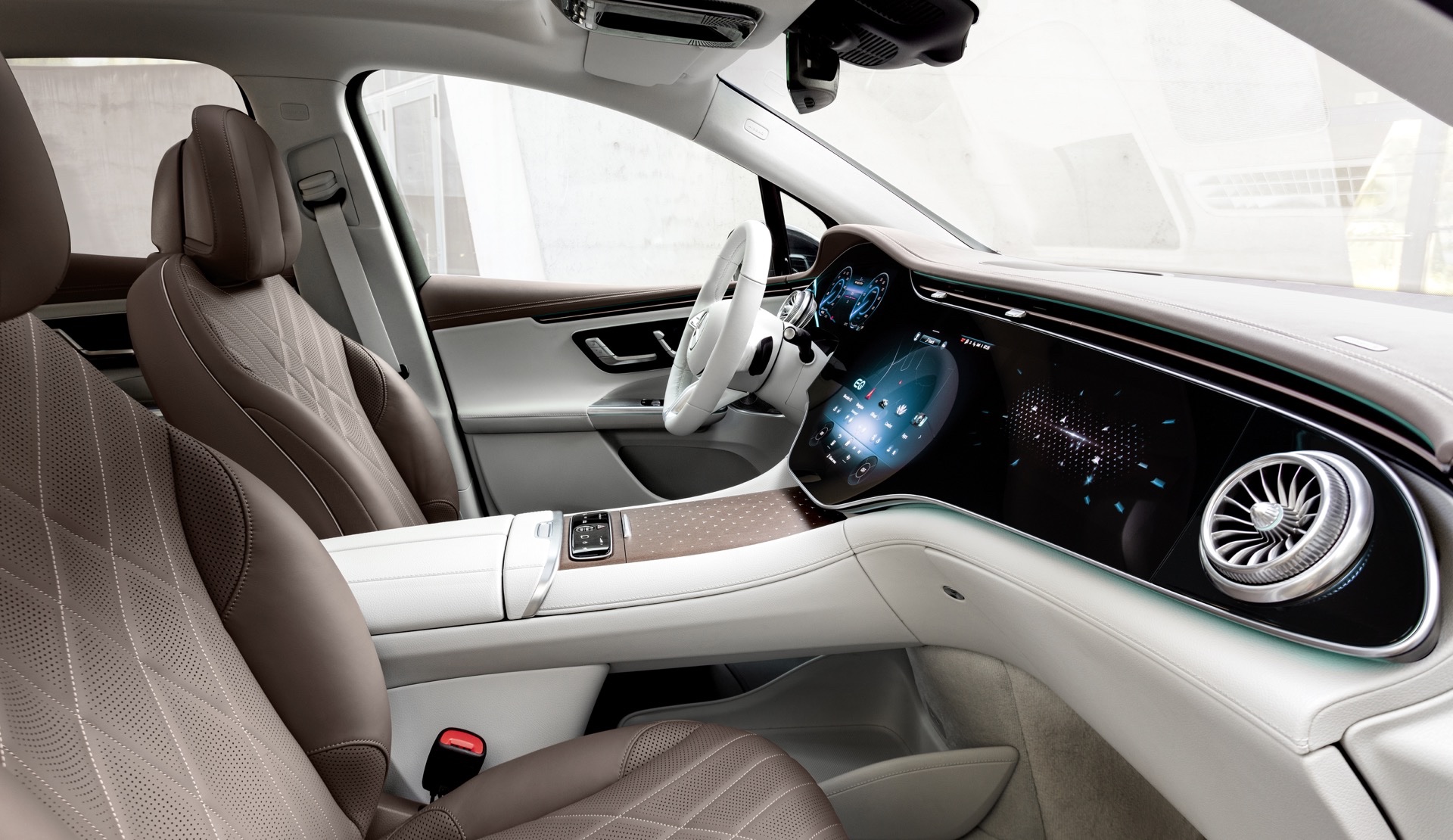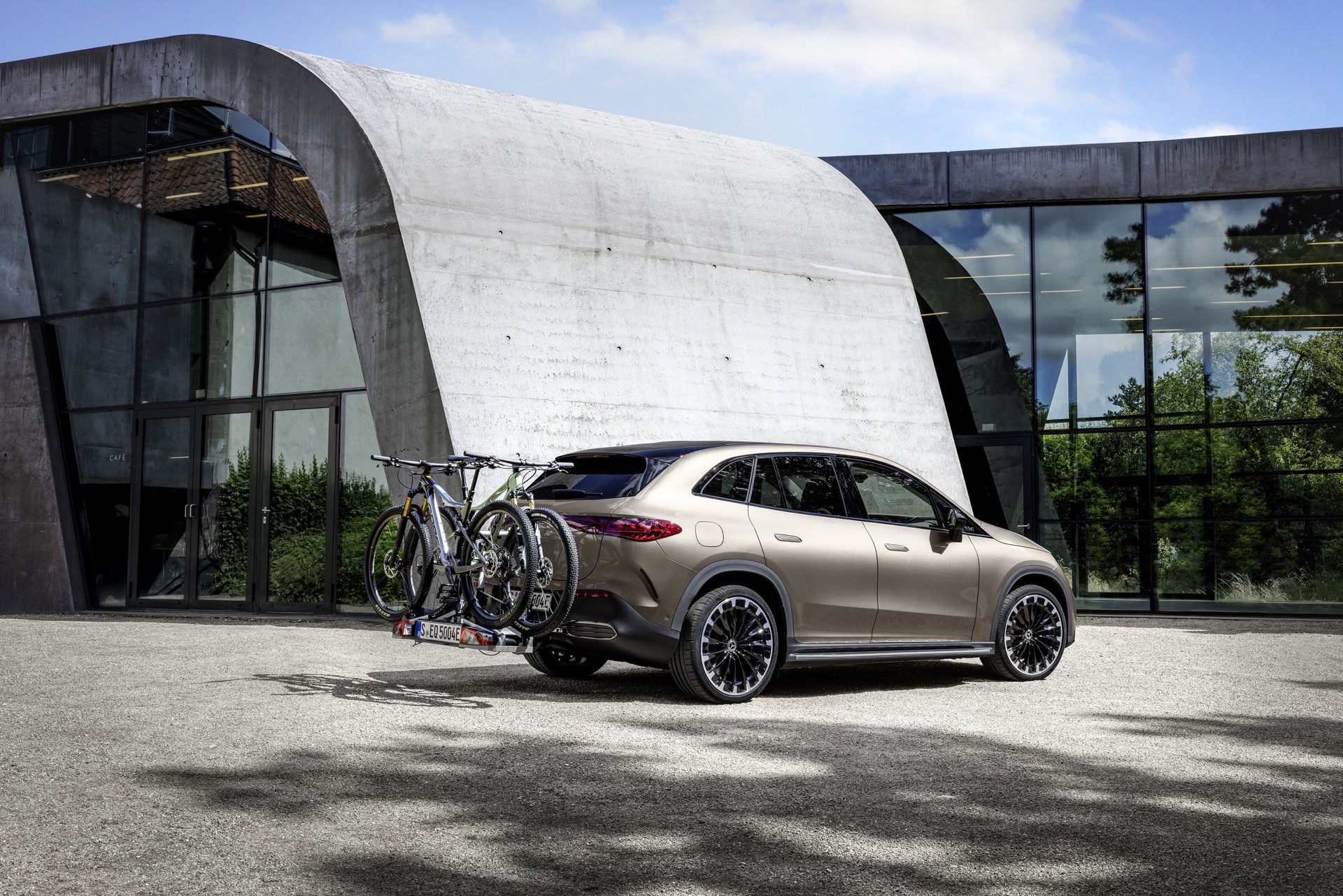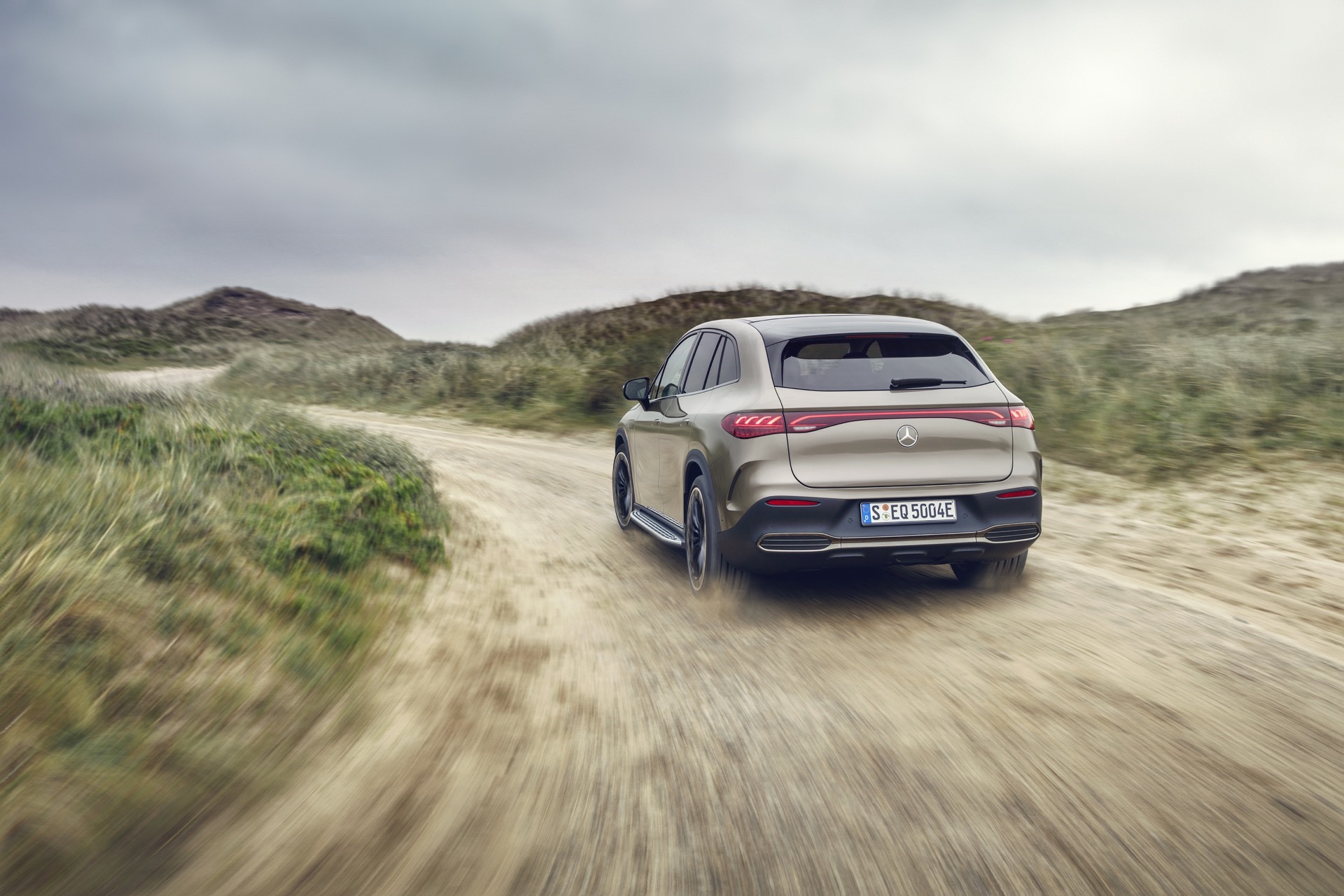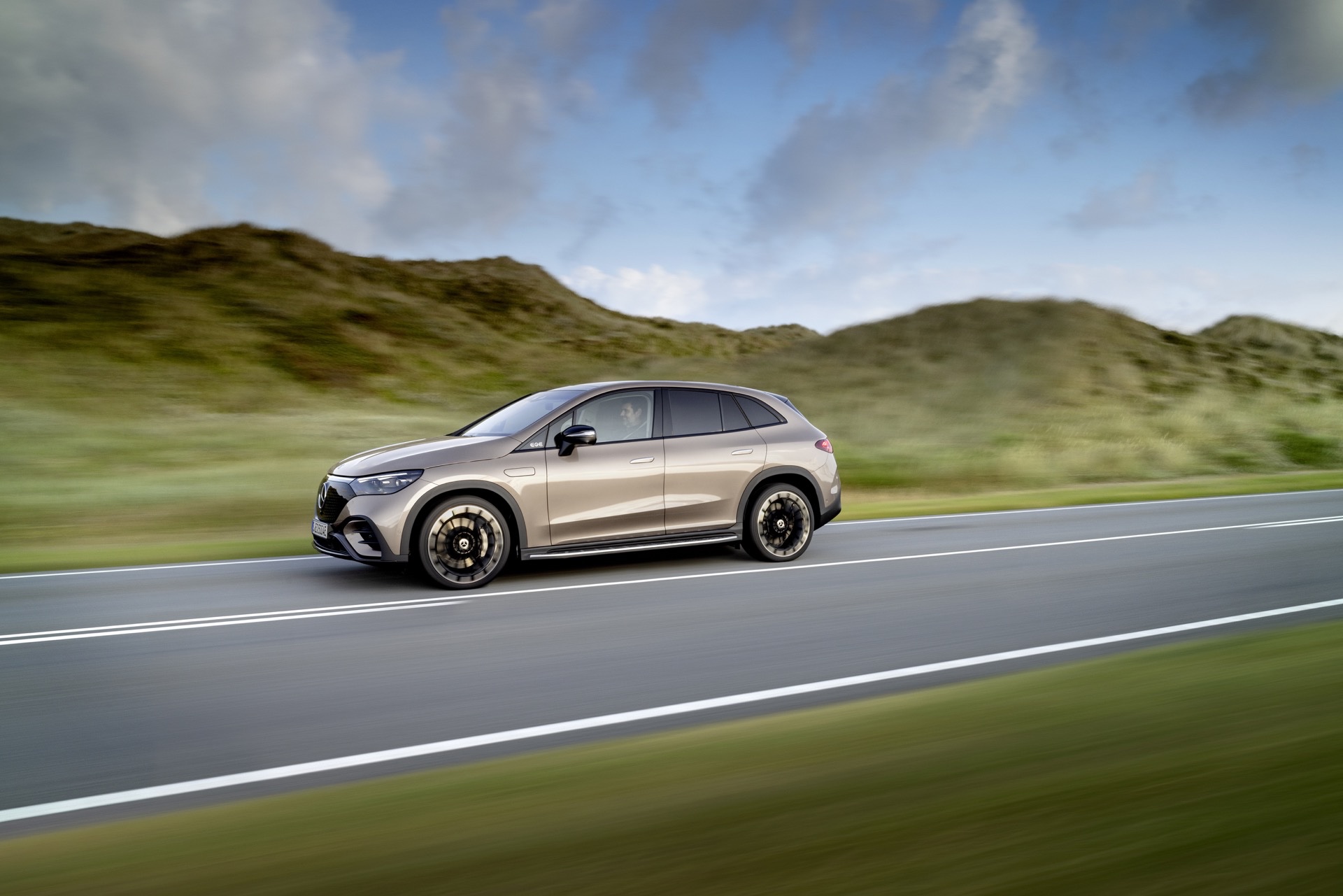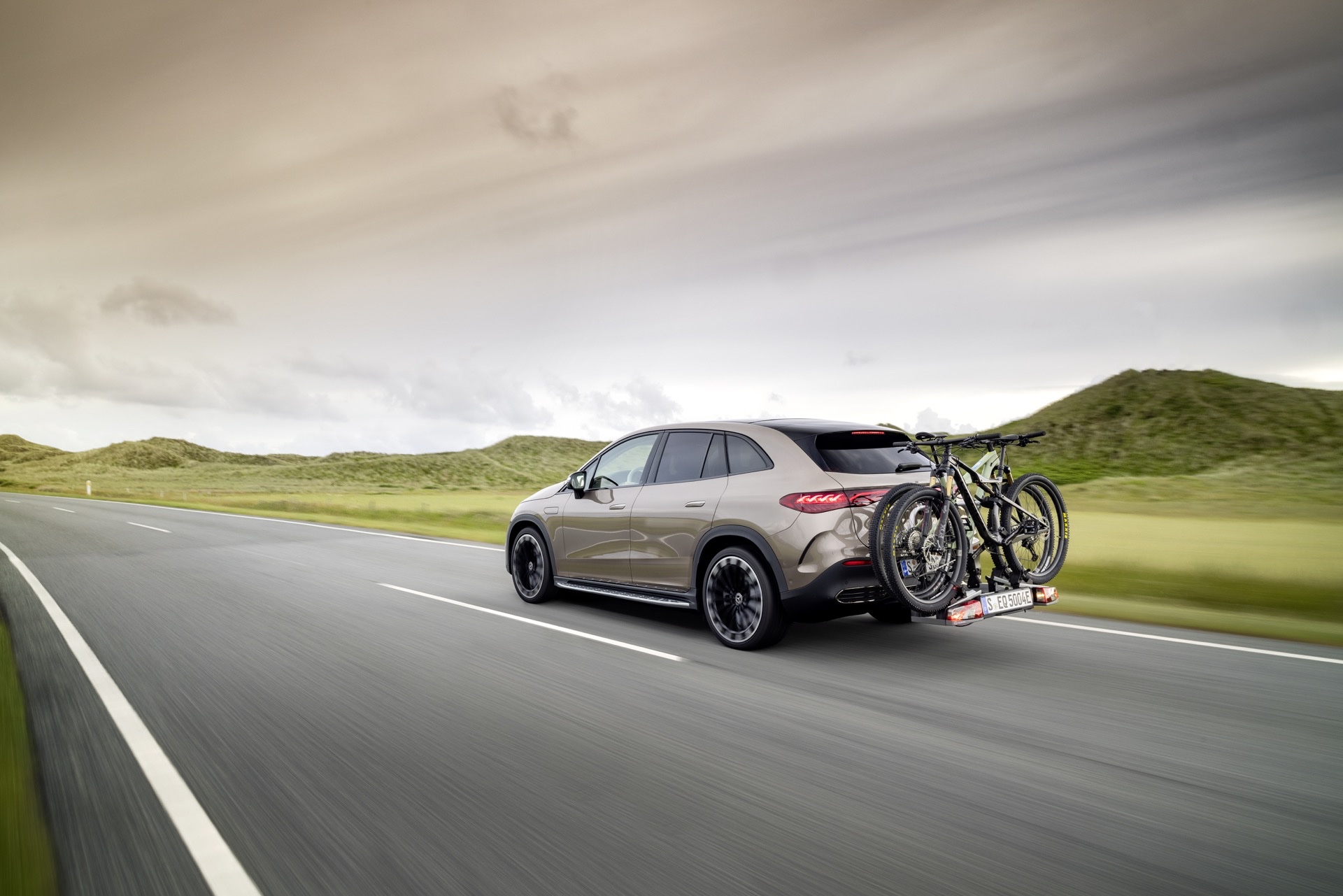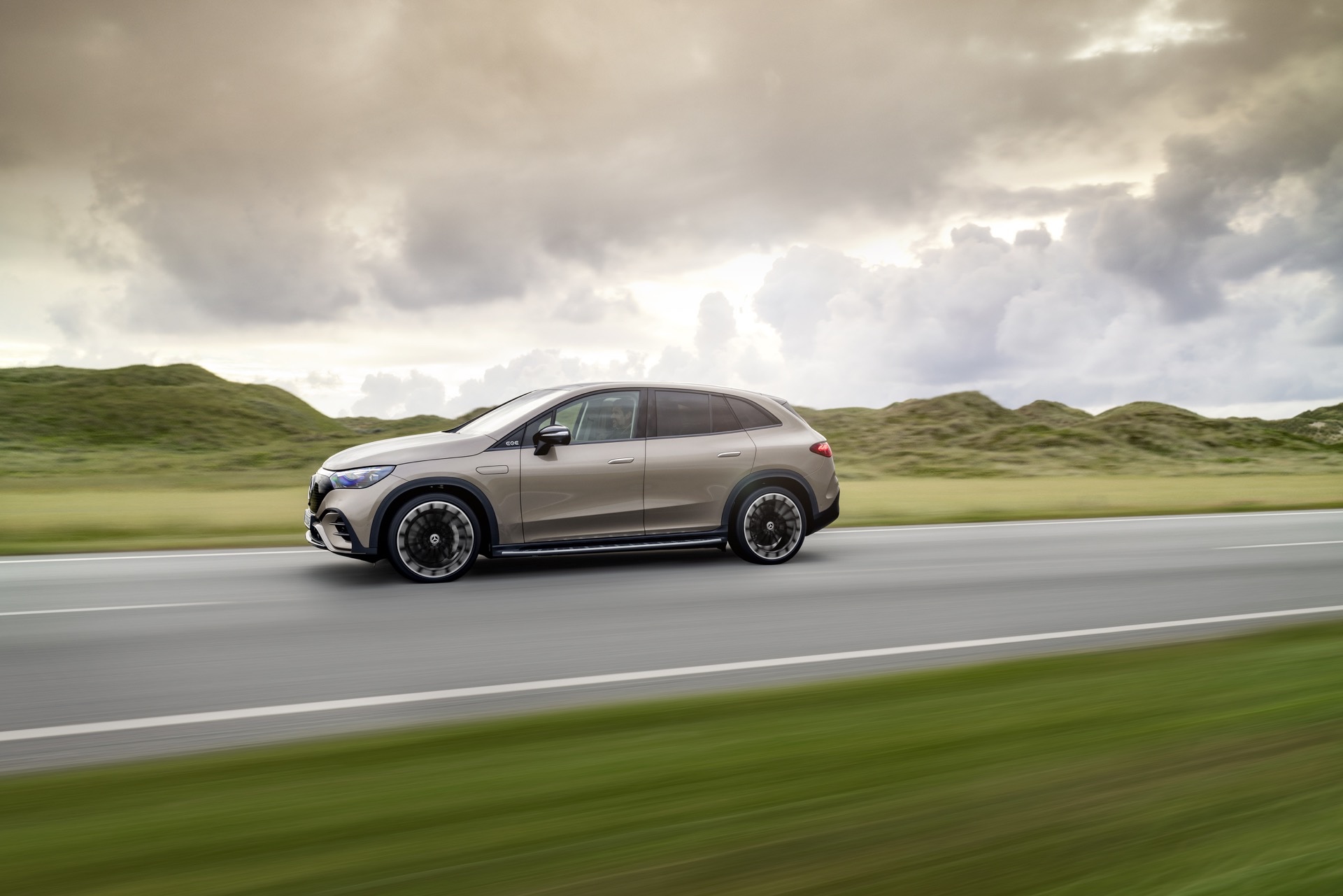The all-new 2024 Mercedes-Benz EQE SUV is here, with a confusing naming choice, a range of up to 590 kilometers (369 miles), rear- or all-wheel drive, and outputs from 288HP (215 kW) to 402HP (300 kW.)
Mercedes has had a habit of out-niching the niche in the past, which could be why the EQE SUV’s standing may confuse you. Simply put, it’s the practical version of the EQE Sedan. Which is the electric equivalent of the E-Class. Which is, well, you get it. Hopefully.
More: 2024 Mercedes-AMG EQE SUV Delivers Up To 687 HP At The Expense Of Range
Launching alongside the regular version is the Mercedes-AMG EQE SUV — the three-pointed star’s first-ever all-electric performance SUV. The AMG-take on an EV SUV amplifies power upto 505 kW (687 hp) and adds standard all-wheel drive, AMG air suspension, standard rear-axle steering, and an AMG-tuned chassis.
Longwinded Names Are Here To Stay
First things first: yes, they’re sticking to this somewhat confusing naming convention. While in other corners of Mercedes’ (soon to be neglected) ICE stable, you can quickly identify a GLE as the SUV-fied version of the E-Class, that thought has seemingly not occurred to the folks at Merc — expect it sort of has.
See, you can get an EQB and EQC, both of which are electric versions of the GLB and GLC. But once you get to EV versions of the E-Class segment, the EQE is now divided into EQE Sedan and EQE SUV. Apart from being a mouthful, we can see consumers who are new to the EV fold getting their wires crossed quickly.
The differentiation comes down to this being the fourth model to come from Mercedes’s dedicated new EV platform (the others being the EQS Sedan, EQS SUV, and EQE Sedan) and not just a combustion-based platform with an EV drivetrain shoehorned inside.
Smaller On The Outside, Not So Big Inside Either
That aside, as the name implies, the EQE SUV is a slightly taller and more practical take on the EQE Sedan. However, you wouldn’t think so from the on-paper dimensions alone. Its wheelbase of 3030 mm (119 inches) is actually 90 mm (3.5 inches) shorter than that of the EQE Sedan’s. Bar the SUV’s height, the exterior dimensions are a similar story. The EQE SUV measures 4863 (191 inches) mm long, 1940 mm (76 inches) wide, and 1686mm (66 inches) tall, making it 132 mm (5 inches) shorter and 11mm (0.4 inches) thinner than the Sedan.
See Also: Mercedes’ Head Of UX Design Goes On Big Screen Offensive
Mercedes says that the shorter wheelbase makes the car feel more agile, quite a feat for a car that weighs in the region of 2600 kg (5732 lbs). No matter; the main selling point with SUV bodyshells is the interior space, right? Well, again, on paper, there’s not entirely the case.
With 520 liters of boot space on offer with the seats up, that’s roughly the same as the EQC (which isn’t based on Merc’s new scalable EV architecture). And it’s a fair bit less than the combustion-powered GLE, which manages 110 liters more with the seats up (630 liters vs 520 liters on the EQE SUV), and a whopping 380 liters more with them down (2,055 liters vs 1,675 liters). Still, it’s more than the EQE Sedan’s 430 liters, which is a victory of sorts, however small.
A Veritable Tech Fest
Of course, where the EQE SUV does claw back points is the tech on offer. Like its smaller sedan brother, the EQE SUV gets the option of Mercedes’ all-expansive hyperscreen. There’s the addition of Dolby Atmos audio and a HEPA filter-equipped air filtration system.
OTA updates are part of the package, while customers are promised the ability to update or “unlock” certain features via the same system. It will also allow for certain features to be activated once regulatory approval is granted, such as the Intelligent Park Pilot, which allows the car to become its own personal valet, able to park itself automatically.
More tech goodies are found in the way of the navigation system that can map out your route to best take advantage of charging stops along the way. There’s the usual bevy of driver-assist tech on offer, while Eco Assist automatically adjusts the regenerative braking strength according to the surrounding traffic, aiding seamless one-pedal driving.
Read: Mercedes Begins EQS Production In India
Mercedes’ Digital Light headlamp tech is on offer, which projects auxiliary markings or warning symbols onto the road ahead of you. There’s also a new “sound-scape” called “serene breeze.” As the name implies, it’s said to offer a relaxed sound “close to nature.” While we remain firmly skeptical, the option to change the fake sounds that are offered remains novel — there’s even a “Roaring Pulse” option which can be downloaded. Sounding like one for the ICE-generation members that are being brought over kicking and screaming, Mercedes describes it as “reminiscent of powerful machines and is sonorous and extroverted.” That certainly sounds familiar.
In terms of increasing range, in the 4Matic variants of the EQE SUV, the front motor can be completely uncoupled during low loads, allowing the car to become rear-wheel drive and save on battery. And there’s the option of rear-wheel steering, which, combined with the car’s four-link suspension up front and multi-link suspension at the rear, is said to make the car as agile as much smaller (and presumably lighter) machines.
Five Models To Choose From
The EQE SUV will be offered in five flavors. On the non-AMG side of the fence is the rear-wheel drive EQE 350+ and the all-wheel drive EQE 350 4Matic and EQE 500 4Matic. AMG will offer an EQE 43 and an EQE 53, which you can read about here. All models use the same 90.6 kWh battery as found in the sedan.
The lineup follows the path laid out by the EQE Sedan, while output figures are the same too. The entry-level 350+ offers the best range of the lot, with a single electric motor on the rear axle contributing to the WLTP range of 480–590 km (300–369 miles). With that, you get an output of 215 kW (288 hp) and 565 Nm (417 lb-ft) of torque.
Step up to the EQE 350 4Matic, and the output stays the same, but thanks to the addition of a second motor on the front axle, torque is increased to 765 Nm (564 lb-ft). You pay the price though, in terms of range, which drops to a WLTP-rated distance of 459–558 km (287–349 miles).
See: A Notch Below? BMW iX Vs. Audi E-Tron Vs. Mercedes EQC
Finally, the most potent non-AMG is the EQE 500 4Matic. Also sporting all-wheel drive, output increases to 300 kW (396 hp) and torque is at a more than healthy 858 Nm (633 lb-ft). As a bonus, range isn’t impacted as much over the 350 4Matic, with the WLTP rating landing at 460–547 km (288–342 miles).
In terms of charging, the EQE SUV can be juiced up at a maximum of 170 kW, which is well short of the Porsche Taycan’s DC max of 360 kW. Mercedes says that the EQE SUV will be able to travel a maximum of 220 km (138 miles) after 15 minutes of DC charging while the brand will guarantee its battery packs for 10 years or 250,000 km — with an unspecified “defined residual capacity.”
Built In The USA
Pricing for the new EQE SUV will be announced closer to its launch. Meanwhile, the cars will enter production at the Mercedes-Benz Tuscaloosa, Alabama plant in the USA from December. The Tuscaloosa plant is also responsible for other EQ models, such as the larger EQS SUV.
The fact that batteries are also produced close by, in Bibb County, may have meant that the car would be eligible for tax credits introduced under the Inflation reduction Act of 2022. However, with a price cap of $80,000 imposed for EVs, it’s touch and go whether the EQE SUV would benefit.
So, what do you think of the new EQE SUV? Does it tickle your fancy, or could it become another EV also-ran? Let us know in the comments below.




